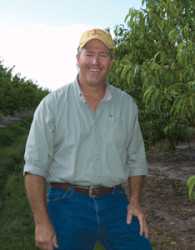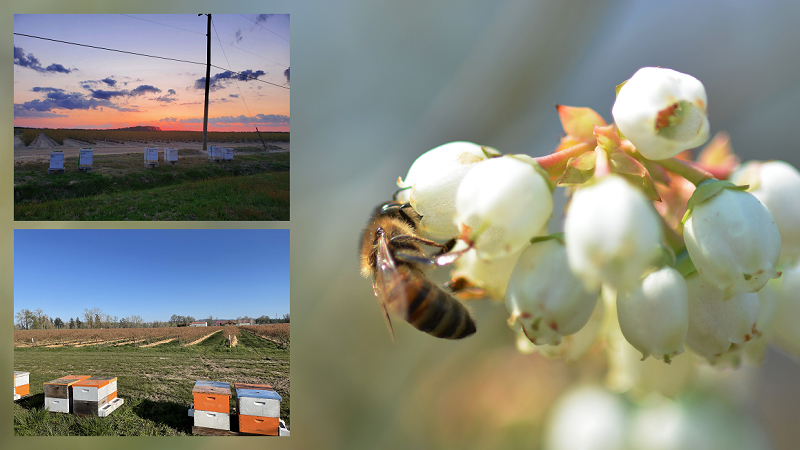Feel The Fuzz

Back in 2005, the state identified 18 citrus trees positive for canker in Ralph Chamberlain’s grove near Punta Gorda. Those 18 trees resulted in 108,000 more being removed in the failed effort to eradicate canker.
The experience taught Chamberlain that there is value in diversity in his farming operation. Citrus greening only reinforced his thinking, so in 2006 he took a chance on a new crop to Florida — peaches. He planted five low-chill varieties developed by the University of Florida.
Management And Marketing
It is not cheap to grow peaches. Production costs run about $3,200 per acre, while Chamberlain’s citrus expenses run about $1,300 on the high side. He adds that the market window for Florida’s peaches makes the investment worthwhile. Harvest runs parallel with blueberries from April until mid-June.
“It’s all about the market timing,” says Chamberlain. “Our crop hits right after the Chile market ends and right before Georgia and California starts up.”
Chamberlain advises any grower considering peaches to appreciate how labor intensive the crop is compared to citrus.
“Going into this, I didn’t realize how hard the work is to manage a peach orchard,” he says. “Peaches really are more like a row crop, so you really have to be out there every day managing them.”
He says managing his 35 acres of peaches is equivalent to managing 600 acres of citrus on the fresh side. Labor makes up about half of production expenses. Because of lack of infrastructure, Chamberlain adds, “You better be prepared to grow them, pick them, pack them, and sell them yourself.”
He markets his peaches through the Sweetbay grocery chain, which has made a push into the “buy local” trend. He has even branded his peaches under the name Florida Sweet, with the slogan “Feel The Fuzz.” He markets the brand with his partner Donald Padgett, who grows low-chill peaches in Arcadia.
Chamberlain adds that the Fresh From Florida program has been a real benefit to his transition into peaches. The program is administered by the Florida Department of Agriculture, and it promotes fresh Florida produce.
Promoting Peach Health
Keeping trees healthy and free of pests and disease is a top priority of Chamberlain’s. He says the critical period is from the end of harvest in June through November.
“Our biggest disease challenge is leaf rust on our peaches,” he says. “This is mainly a Florida problem and one we attempt to control with fungicides like Abound (azoxystrobin, Syngenta Crop Protection), Pristine (pyraclostrobin, BASF), Gem (trifloxystrobin, Bayer CropScience), and a few other fungicides that we rotate.
The peach trees require about 20% less water than citrus trees, but the fertility programs for the two crops are about the same. Chamberlain also believes promoting plant health improves yield.
“On plant health I have been as aggressive as a farmer could be with a crop,” says Chamberlain. “I have used Employ (harpin proteins, Plant Health Care) for some time on my citrus, and after looking at a University of Georgia study on the product which showed a very nice fruit size increase of 25% in peaches, I’ve been using it on that crop as well. I also apply micro nutrients with most sprays and try to maximize the fruit and tree health every chance I get.”
Proof In The Profits
After making the investment in a virtually brand new crop to Florida, Chamberlain says peaches have provided strong returns and he expects yields to increase as the trees mature. Last year, 15,000 pounds of peaches were taken off the trees, and he hopes for 125,000 pounds this spring. The following year, production should reach about 300,000 pounds.
So did all the hard work pay off? Chamberlain says he plans to plant another 20 acres this year, which sounds like a strong “yes.”
to see a summary of the five varieties planted in Chamberlain’s Orchard.










